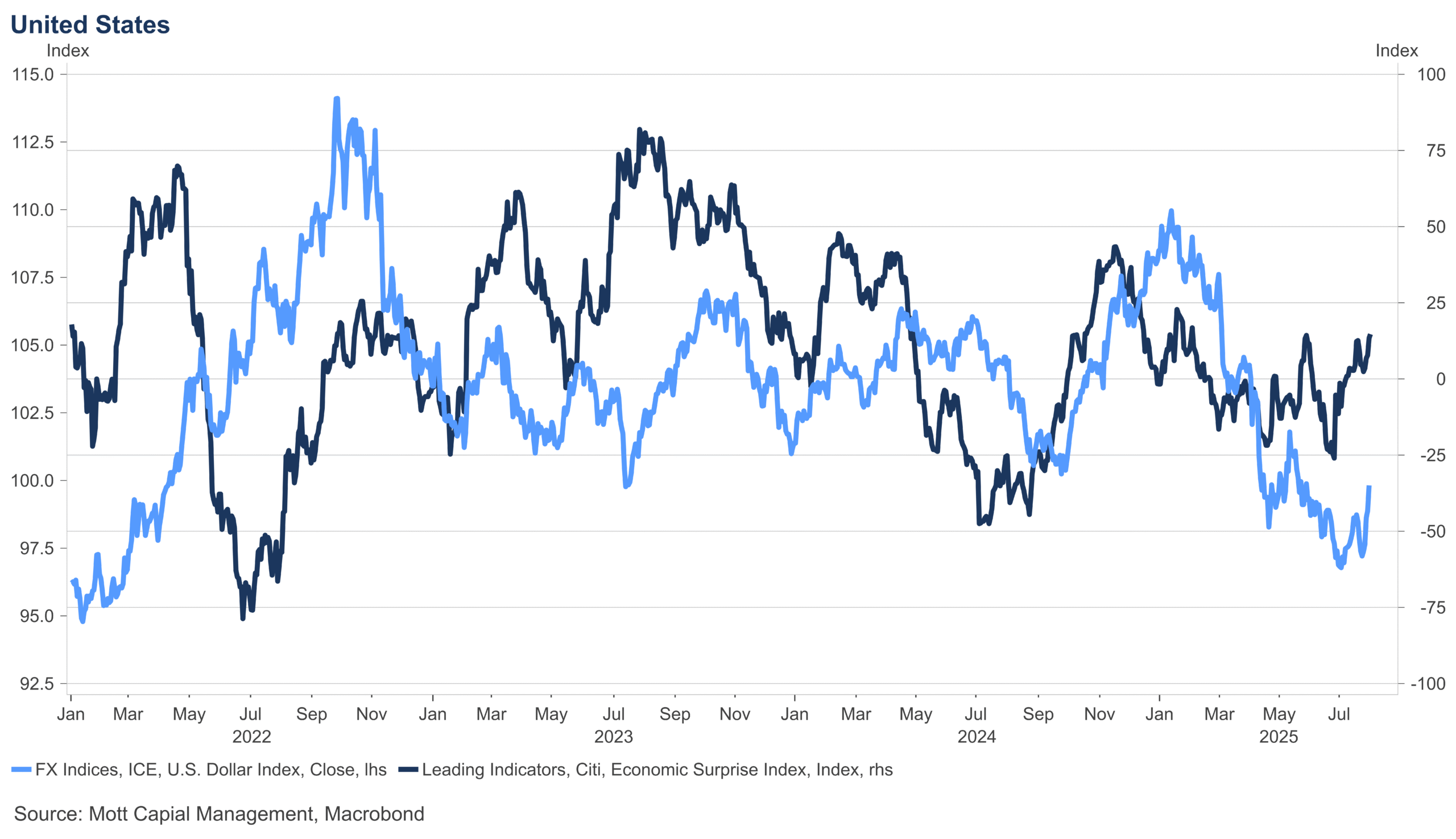Oracle stock falls after report reveals thin margins in AI cloud business
It was an ugly day in the stock market, with the S&P 500 finishing down about 40 bps, despite Meta (NASDAQ:META) jumping more than 11% and Microsoft (NASDAQ:MSFT) gaining around 4%. The equal-weight RSP ETF (NYSE:RSP) performed even worse, losing roughly 90 bps.
The S&P 500 initially rose about 70 bps but gave back those gains following a hotter-than-expected PCE report. The focus today shifts to the jobs report, with consensus expectations low at just 110,000—though Kalshi markets suggest another upside surprise could be in store, betting on 130,000 jobs created in July.
The VIX 1-day climbed to 16.8 on Thursday, which is relatively low ahead of a jobs report. Unless implied volatility rises significantly during the overnight session, today’s volatility crush after the jobs data should be minimal. However, for implied volatility to move higher overnight, futures would need to sell off between now and the report’s release at 8:30 AM ET.
The 1-month implied correlation index moved higher on Thursday, and it’s likely to keep climbing, especially considering both Apple (NASDAQ:AAPL) and Amazon (NASDAQ:AMZN) reported earnings tonight. If historical seasonal patterns hold, the correlation index is expected to continue rising, indicating that the S&P 500 may have already reached its peak.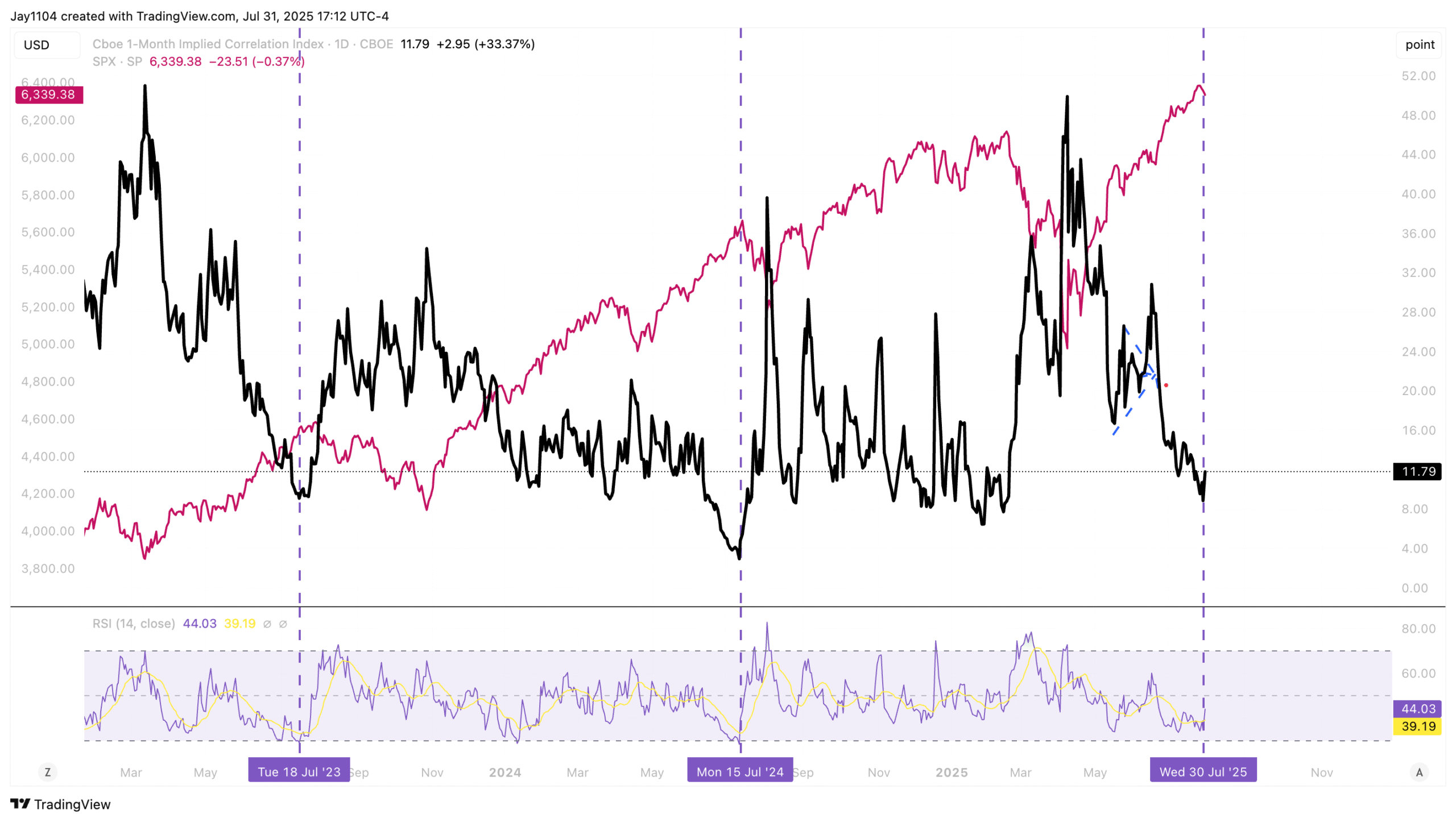
The 10- and 21-day realized volatility measures have stopped declining, and at this stage, both appear poised to rise. This likely signals higher implied volatility levels ahead.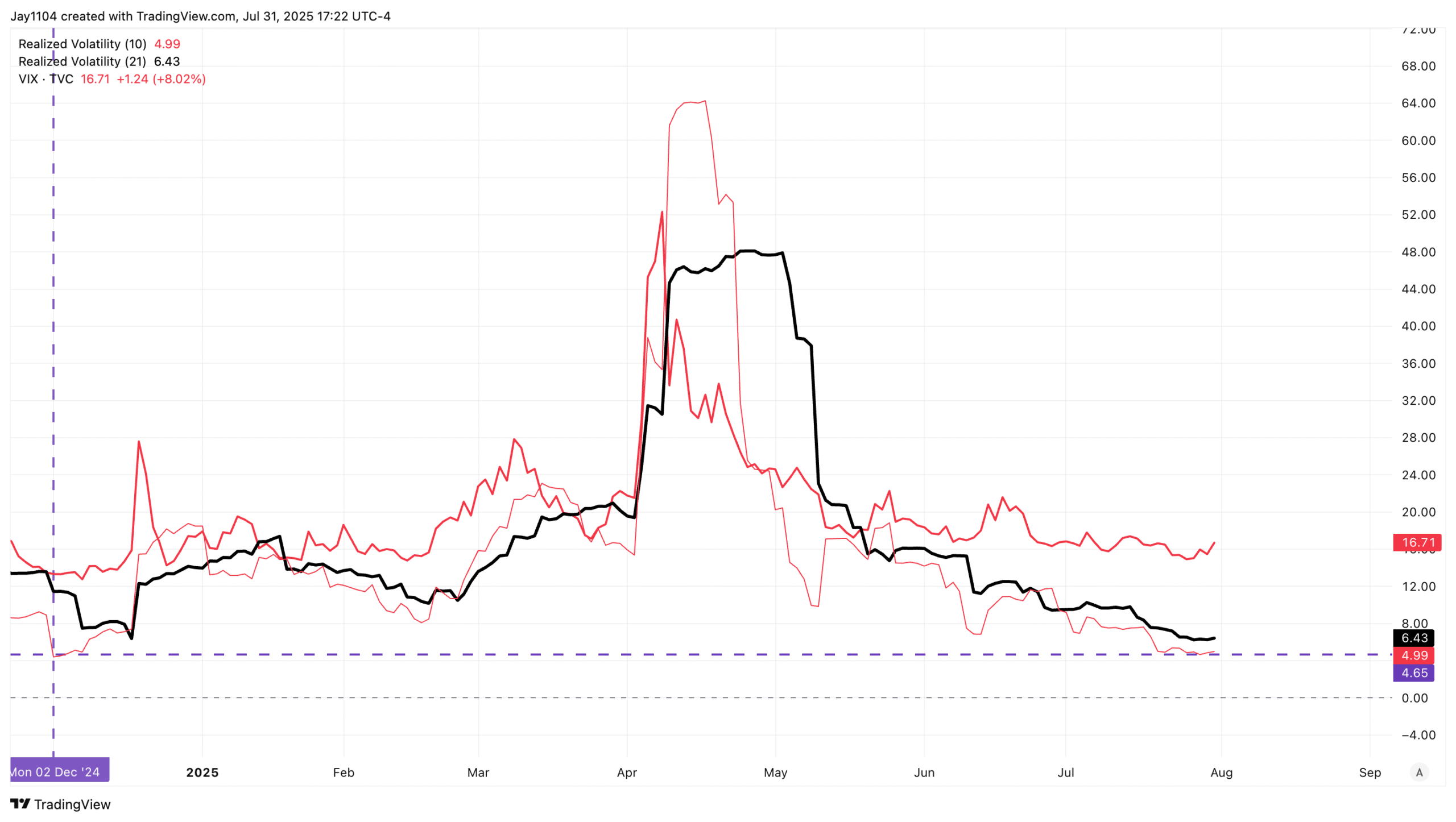
Technically speaking, the S&P 500 formed a bearish engulfing pattern on Thursday—the second occurrence this week. Additionally, it appears to have broken the uptrend established in late June.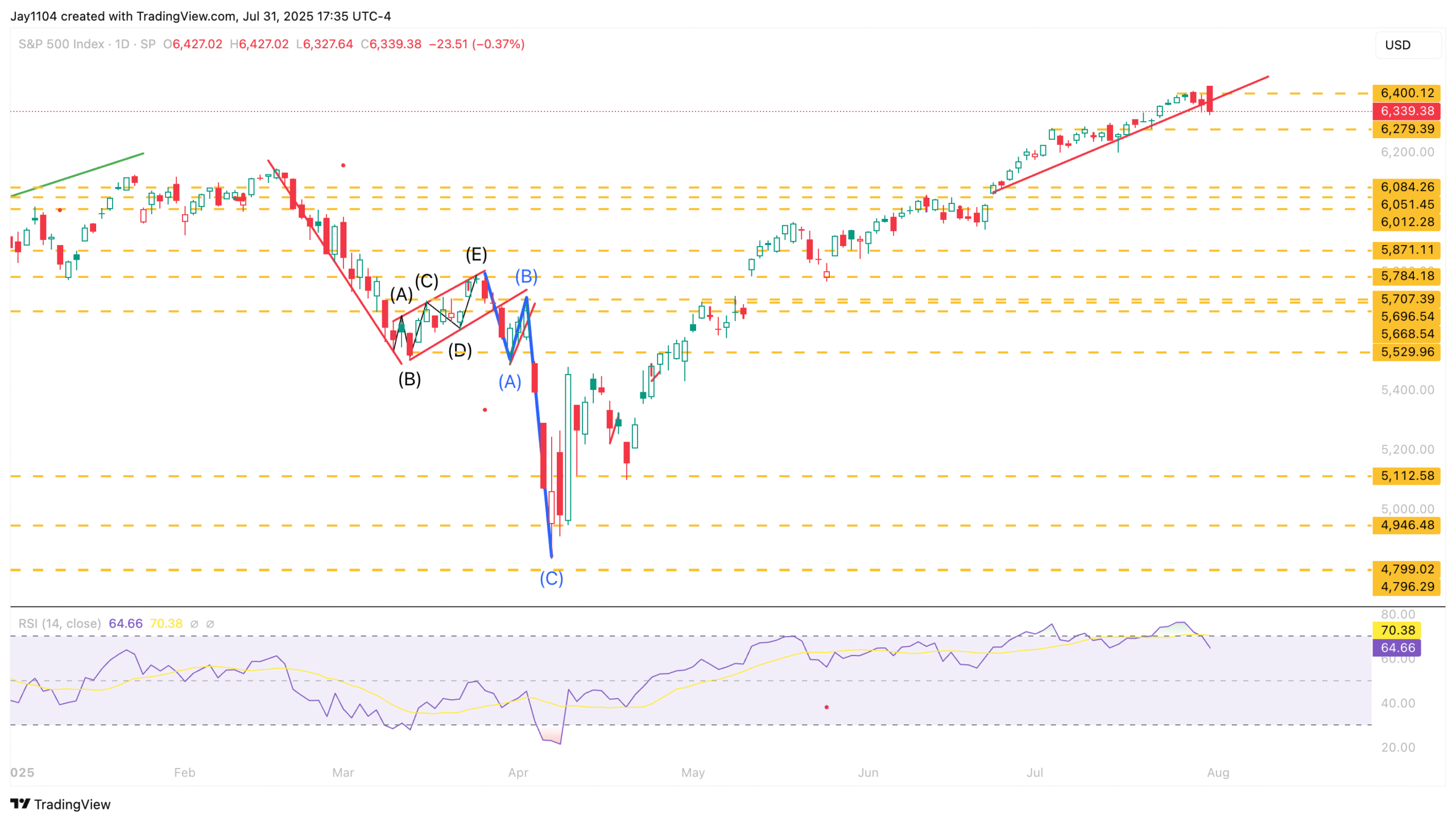
The dollar index rose again on Thursday, boosted by the hotter-than-expected PCE report and Employment Cost Index. If today’s jobs report beats expectations—as Kalshi markets suggest and recent Paychex (NASDAQ:PAYX) and ADP data indicate—there’s a strong likelihood the dollar will extend its recent gains. Ultimately, it will hinge on government hiring at the state and local levels.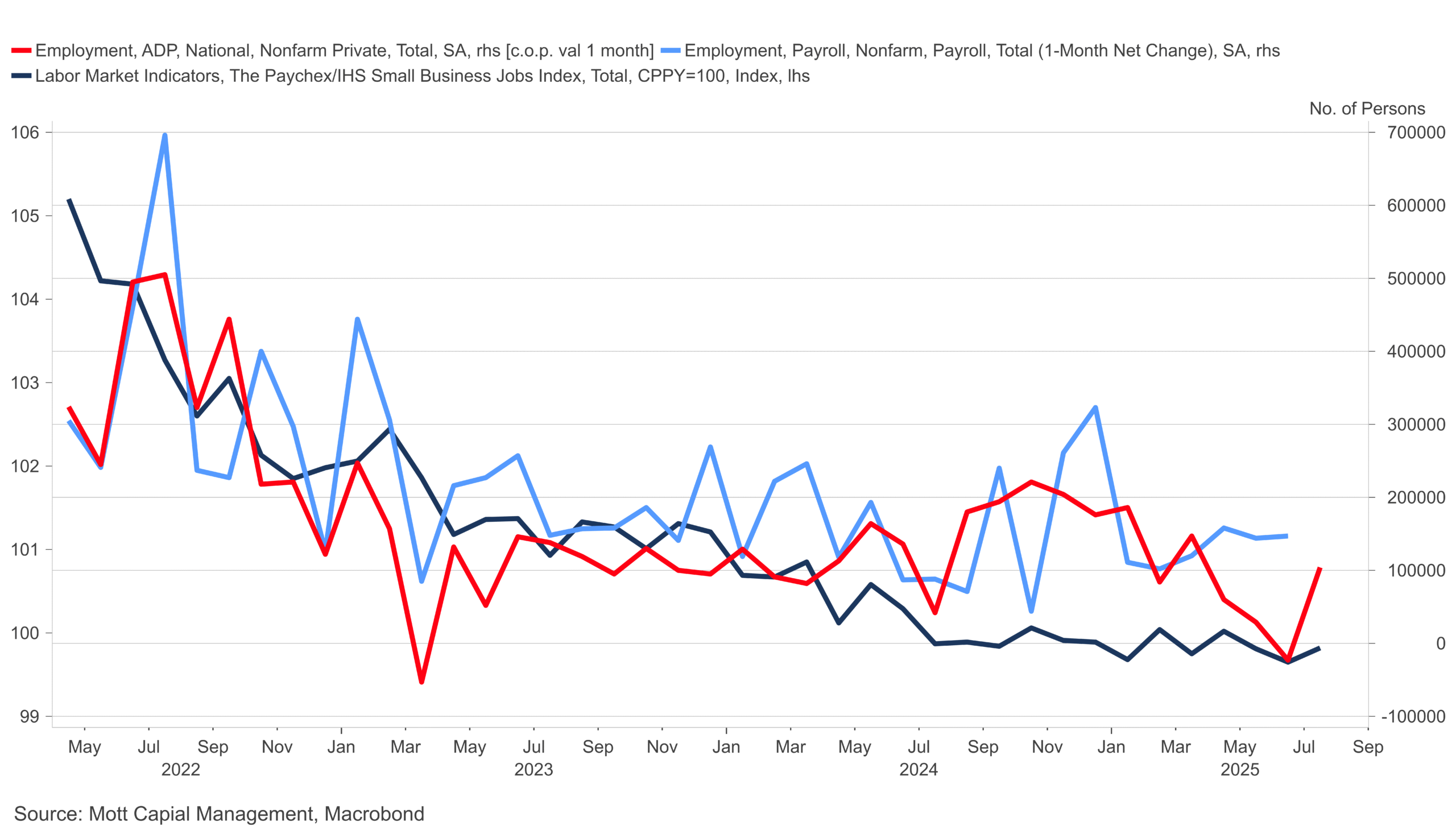
For the most part, the S&P 500 has been trading inversely to the dollar index. Before May 9, when the dollar declined, stocks also fell; after May 9, as the dollar weakened, stocks moved higher. Now, with the dollar gaining strength again, equities are beginning to struggle.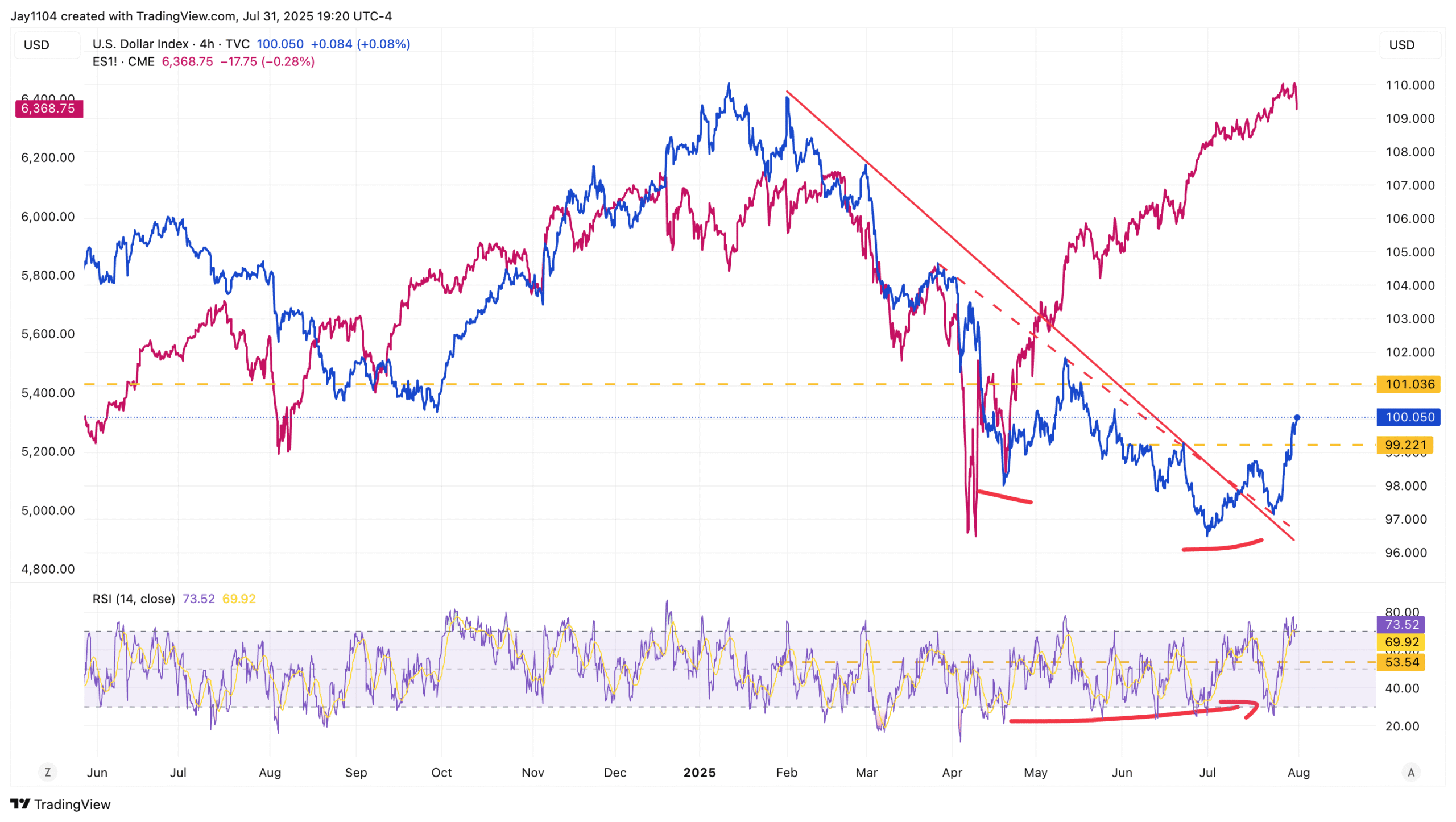
If the Citi Economic Surprise Index has any say in the matter, the dollar’s rally might just be getting started—as hard as that may be for some to believe.